Differences Between The F-22 Raptor and The F-35 Lightning II
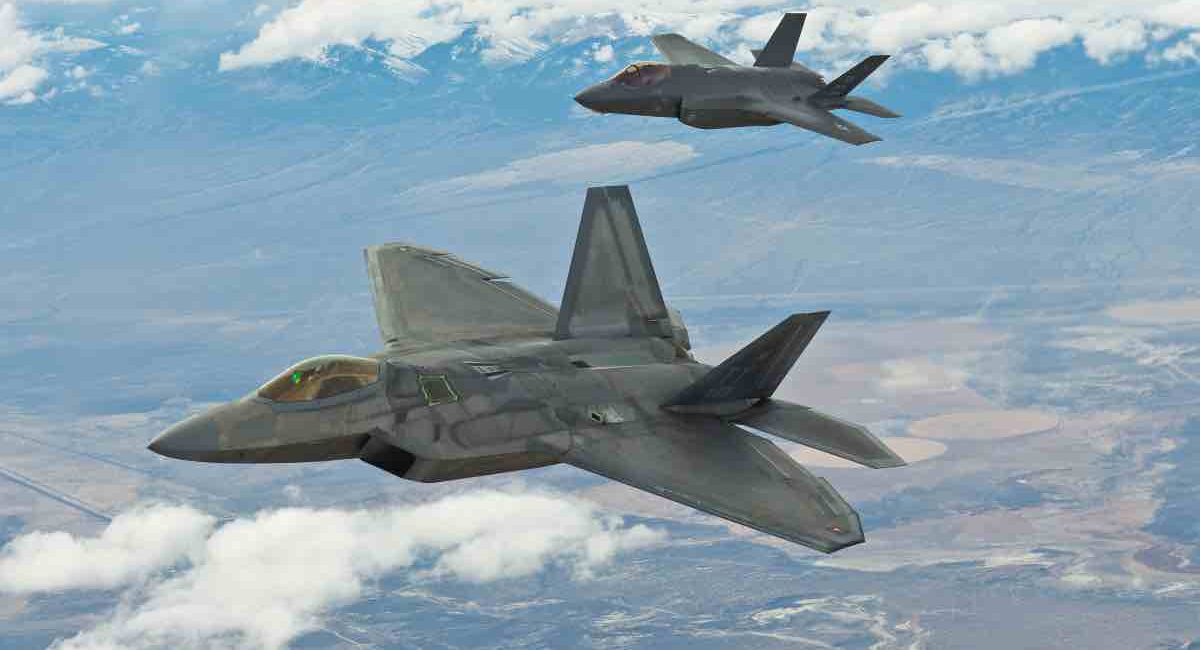
The latest and greatest products of the U.S. Air Force and its contractors are the F-22 Raptor and the F-35 Lightning II. They are alike in so many different ways, but what makes them special is what sets them apart. Here is a list of areas where the F-22 and the F-35 differ.
Engine
The most obvious difference between the two aircraft is the F-22 employs two engines and the F-35 only uses one.
Two F119-PW-100 turbofan engines power the F-22 Raptor. Two things set the F-22 engines apart from the F-35 engine. The Pratt & Whitney F119s gives the F-22 to ability to supercruise (operate at supersonic speeds without using afterburners). Secondly, the convergent/divergent thrust vectoring nozzle, which vectors thrust up or down a maximum of 20 degrees, gives it maneuverability that the F-35 just can’t match. One F119 engine operates in the 35,000-pound thrust class, together they operate in the 65,00-pound – 70,000-pound thrust class.
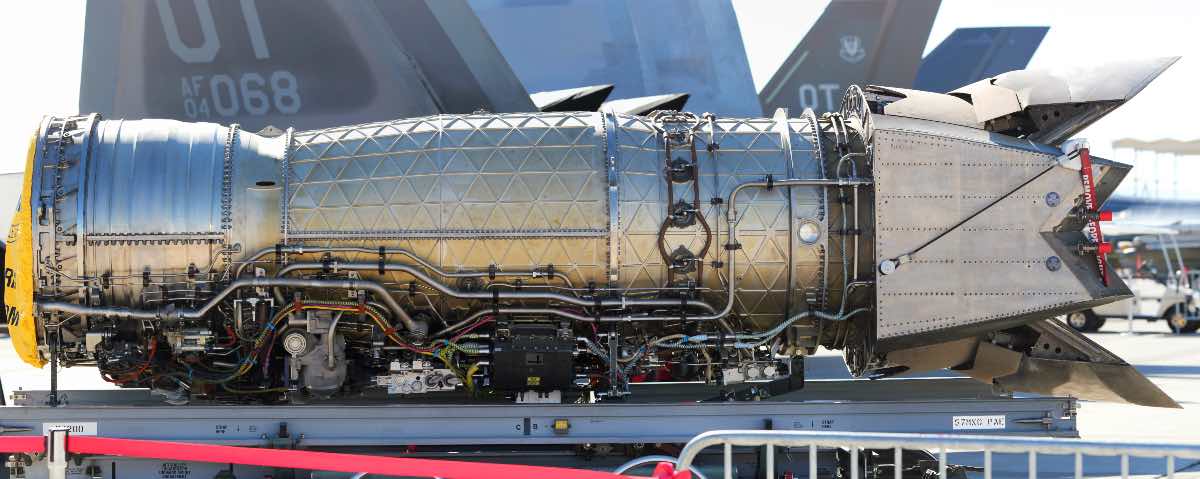
Either a F135-PW-100, F135-PW-400, F135-PW-600 power the F-35, depending on variant. The F-35 Lightning II complements the F-22 by fulfilling an air-ro-ground role. Also, many more F-35s will be built for the U.S. Military than F-22s when it’s all said and done. Therefore, the maneuverability and supercruise capability aren’t as important as safety, ease of production, and continued maintenance costs. The Pratt and Whitney F135 engine operates in the 45,000-pound thrust class.
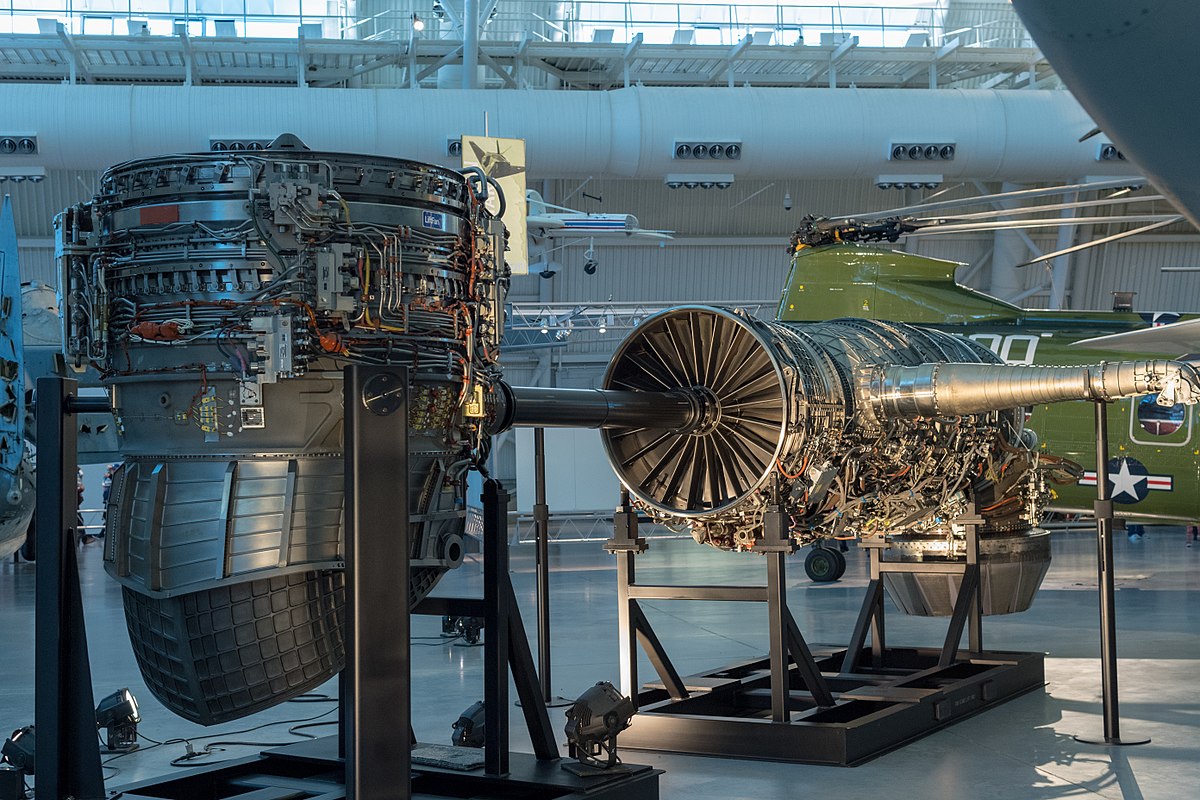
Weaponry
The F-22’s “first look, first shot, first kill” mantra refers to its ability to locate an emery, fire at the enemy, and escape before the enemy pilot knows the F-22 has locked onto it. This removes all need for the dogfight scenarios of the 20th century. To get the job done, the F-22 relies on: six AIM-120C and two AIM-9 missiles for air-to-air combat, and two 1,000-pound Joint Direct Attack Munitions (JDAM), two AIM-120C and two AIM-9 missiles for air-to-ground combat. All weaponry is held in weapons bays internally on the aircraft in order to maintain the F-22 stealth signature.
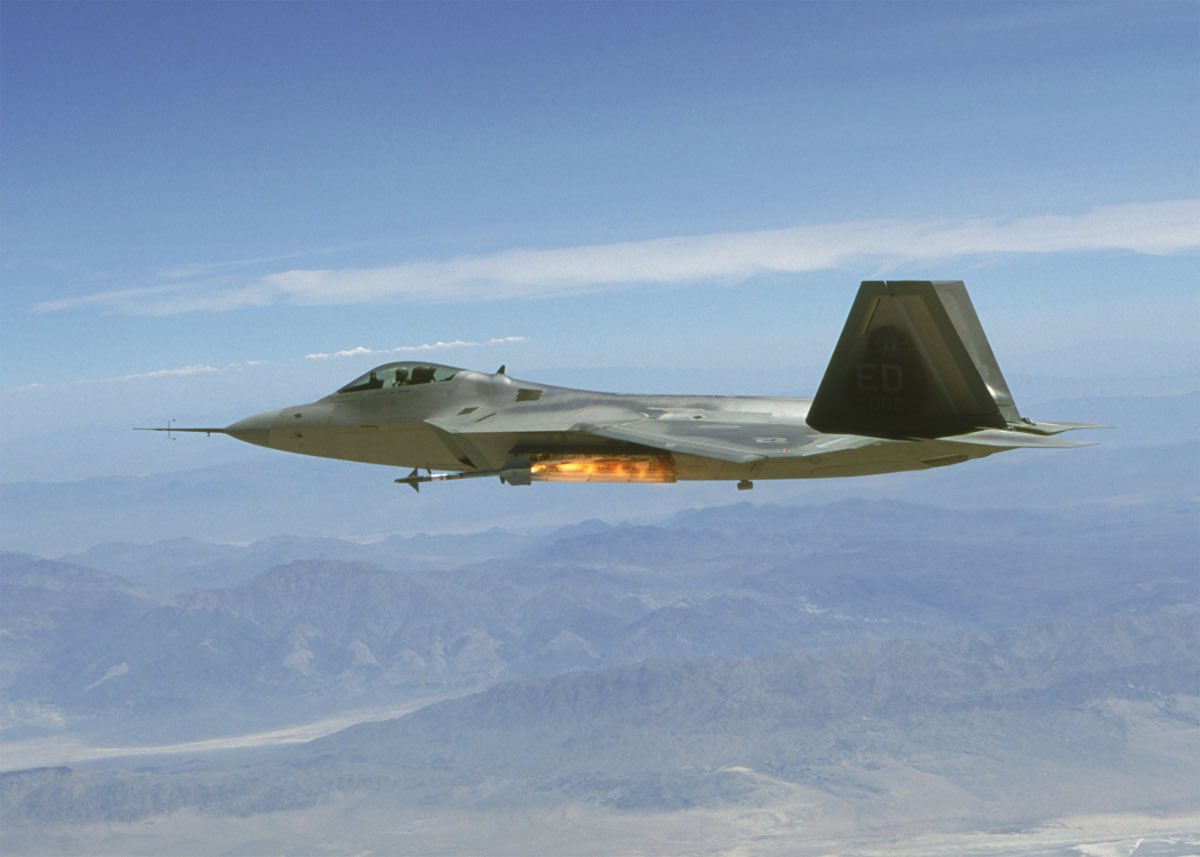
The F-35, the heavier hitter of the two, can shed its stealth capability by carrying external ammunition in what’s referred to as “Beast Mode”. “Beast Mode” means the F-35 is completely maxed out with munitions. When maxed out, the F-35 carries: 14 AIM-120 AMRAAM and two AIM-9x Sidewinder missiles for air-to-air combat, as well as two AIM-120 AMRAAM, six GBU-31 JDAMs (Mk84 warhead), and two AIM-9x Sidewinder missiles for air-to-ground combat.
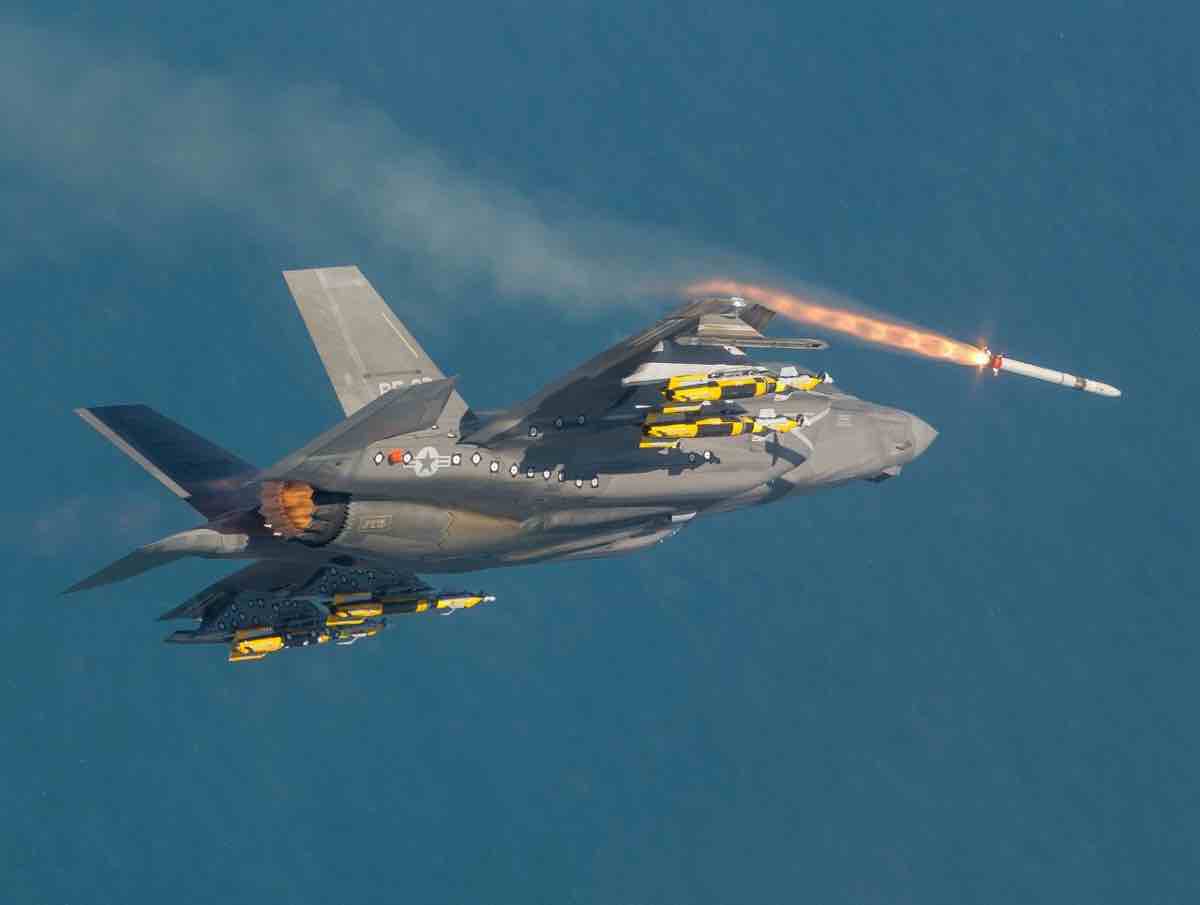
Cost
Discussion over the cost of the F-22 Raptor existed since the program was announced. In fact, the program ended prematurely over the soaring costs of production. The U.S. Air Force wanted more than 700 F-22s originally, but ended up with just shy of 200. The unit cost of one F-22, without factoring in research and development or lifecycle maintenance, is $150 million. Adding in research and development, the F-22 cost is $334 million. Including those two plus estimated (Government Accountability Office) lifetime maintenance, the F-22 costs nearly $700 million per plane.
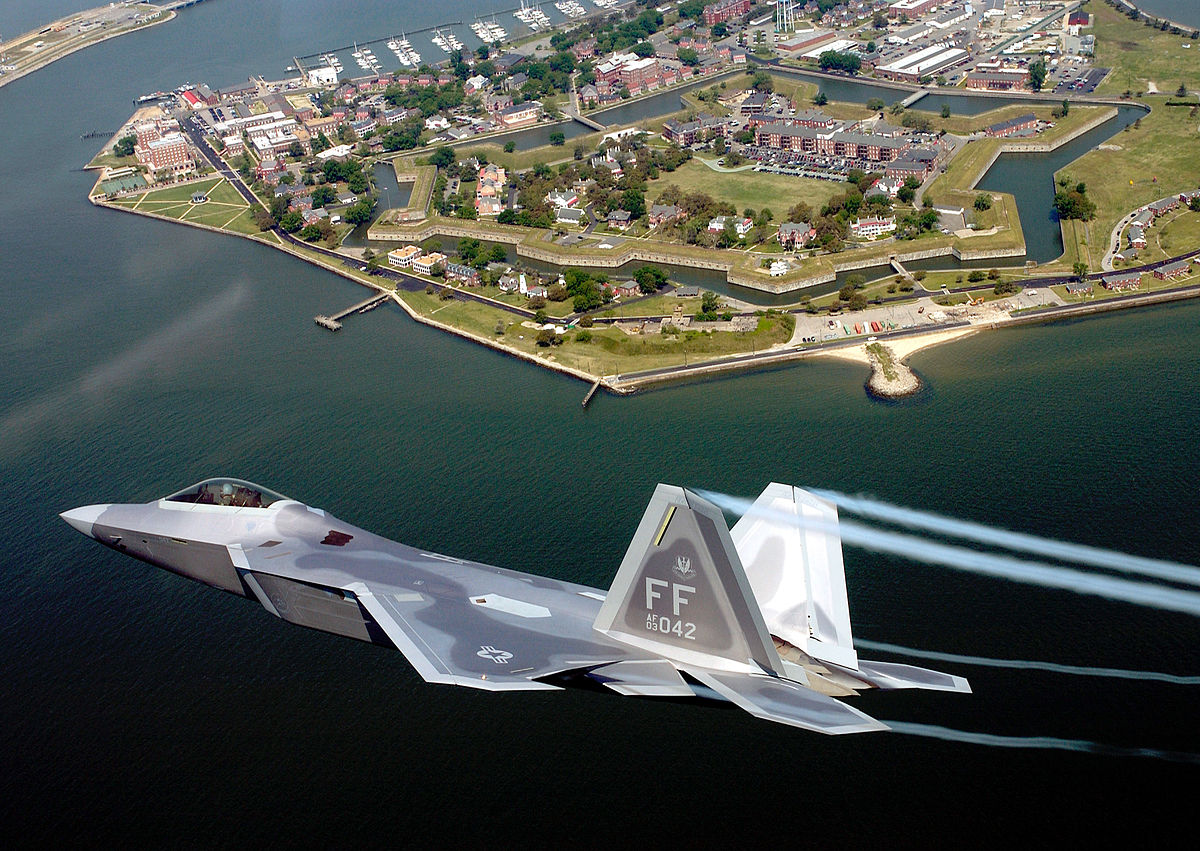
The rising price tag of the F-22 helped bring the F-35 into existence. The U.S. Military wanted a cheaper, easier, potentially longer lasting option to complement what the F-22 was designed for. The F-35 program’s purpose is to fill the air-to-ground roles the F-22 can not, and be cheaper and more plentiful. The F-35 unit cost is $91 million (F-35A), not including research and development or lifecycle maintenance costs. If Lockheed Martin delivers 300 F-35s (it’s already delivered over 150) to the U.S., then each plane will have a lifecycle costs of about $373 million each.
Max Speed
Speed is definitely the focus of the F-22 Raptor, but both aircraft have impressive top speeds. The F-22 max speed sits around Mach 2, or over 1,500 miles per hour. The key to this speed which was noted earlier, is the F-22s capability to supercruise. It can sustain flight speeds well over Mach 1 without using afterburners, which is critical in order to keep its heat signature, which aids overall stealth profile. The F-35 Lightning II max speed is a little lower, about Mach 1.6. Mach 1.6 is roughly 1,200 miles per hour.
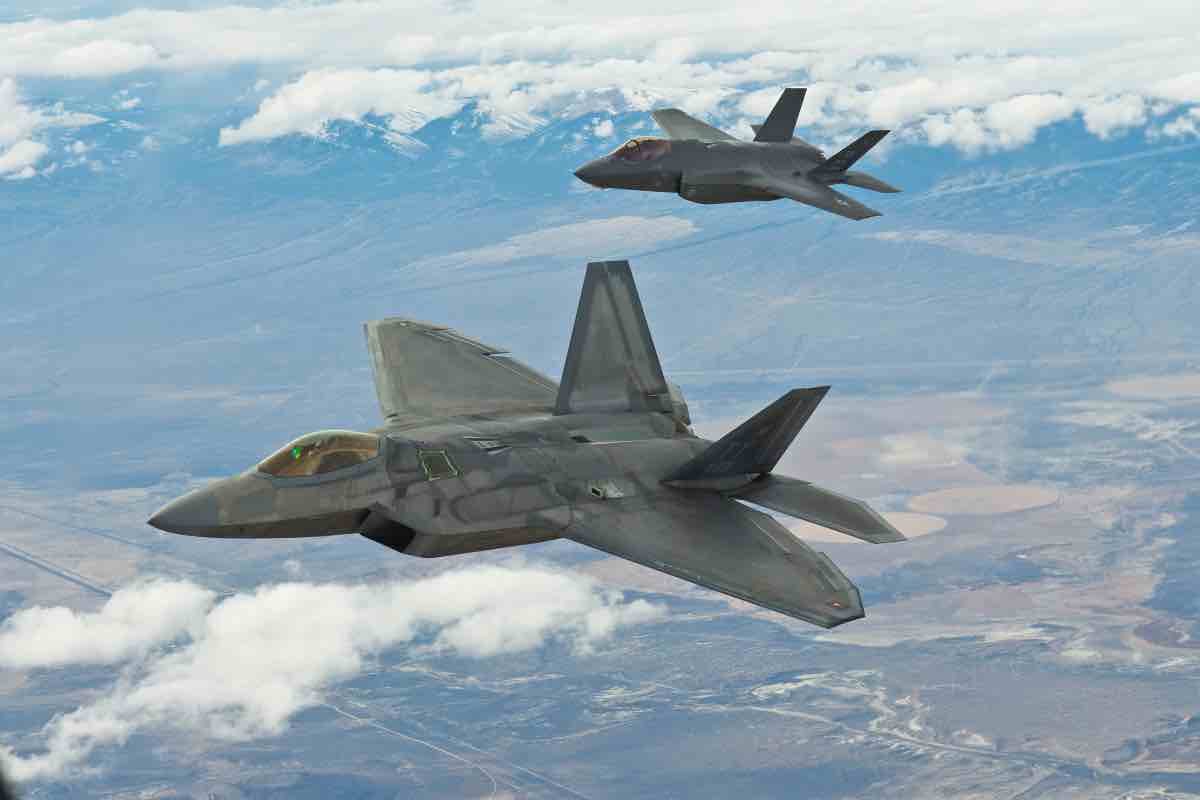
Landing
While the F-22 is an air superiority fighter through and through, the F-35 offers more variety – especially when it comes to landing the aircraft. The F-22 lands as all conventional aircraft land, but two of the three F-35 variants have unique landing capabilities.
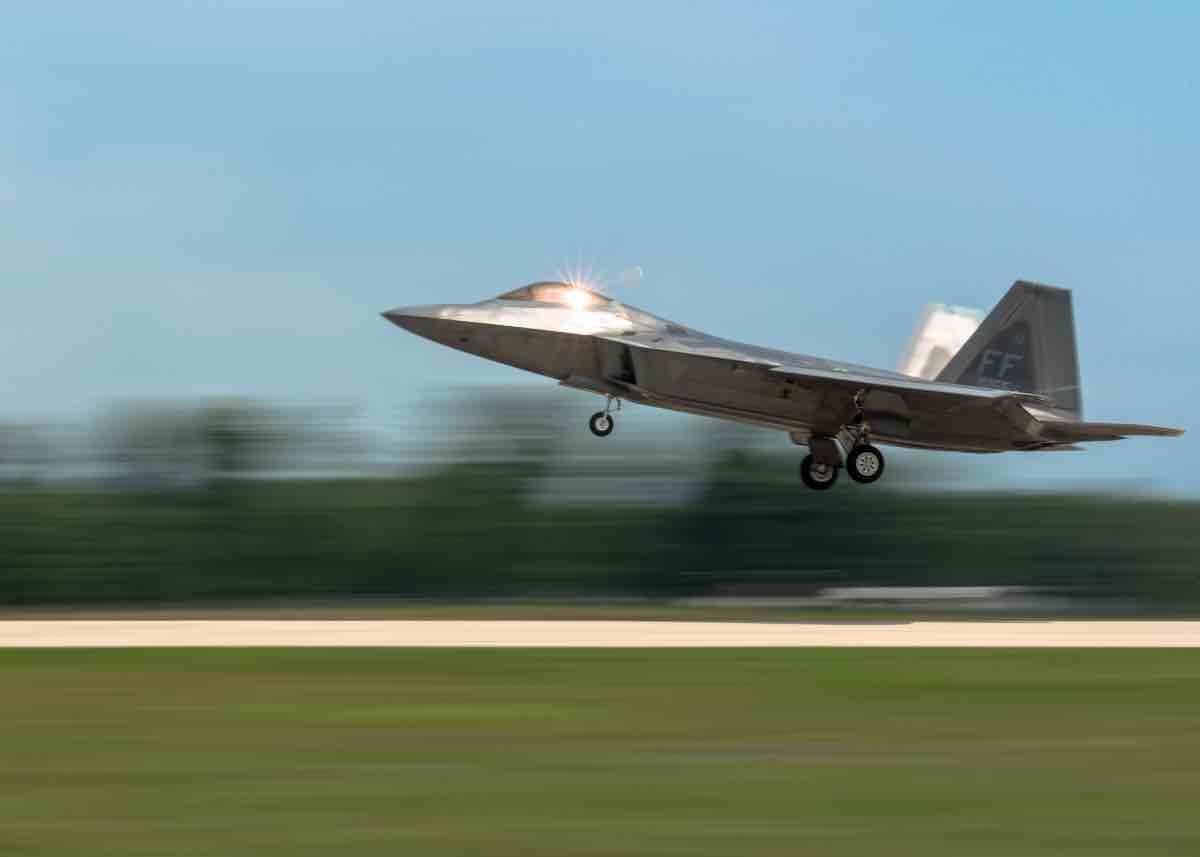
The F-35B variant is designed for short takeoff/vertical landing (STOVL) and the U.S. Marine Corps. It is designed to operate from austere bases and a range of air-capable ships near front-line combat zones. The F-35B is the first supersonic jet in the world with STOVL gear. The F-35C, the most expensive variant of the F-35, is designed for aircraft carrier use with the U.S. Navy. The F-35C more robust landing gear and larger wings than the other variants, making it suitable for catapult launches and fly-in arrestments aboard naval aircraft carriers. The F-35A, designed for the U.S. Air Force, is a conventional landing aircraft. The B and C variants can land conventionally, as well.
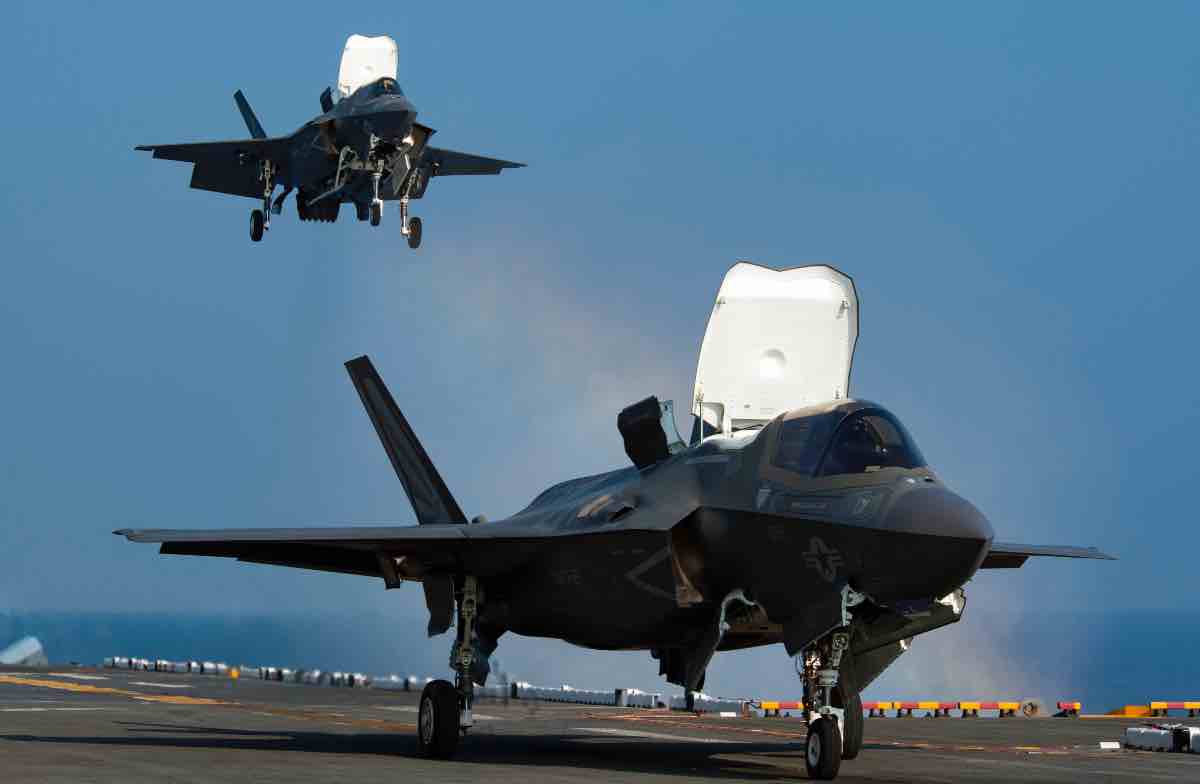
Communication, Navigation and Identification
The developers of the Communication, Navigation and Identification (CNI) avionics systems differ between these two fifth-generation fighters. The CNI in the F-22 is designed and developed by Lockheed Martin. More specifically, Lockheed Martin Tactical Aircraft Systems (LMTAS) and TRW Military Electronics and Avionics Division. However, the F-35’s CNI is touted as the ‘most advanced integrated avionics system ever engineered’ by its sole developer, Northrop Grumman. The two major defense contractors work together on several projects for the U.S. Air Force, but the CNI avionics systems of the F-22 and the F-35 are not one of those projects.
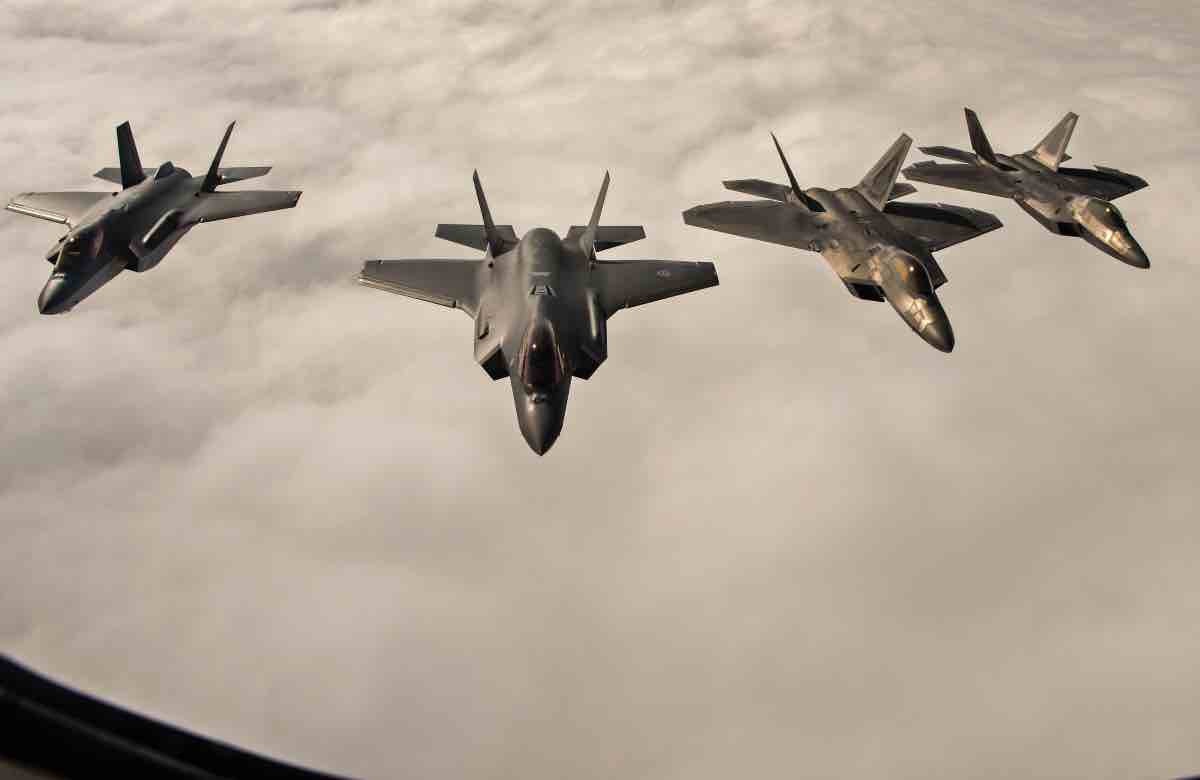
Radar
The F-22’s radar system, APG-77, is slightly outdated compared to the APG-81 radar of the F-35.
The F-22’s APG-77 radar is an advanced multimode, multitarget interleaved search/track, all-weather, fire control radar. It incorporates the following design features: Active Electronically Scanned Array (AESA), low observability (LO), electronic counter-countermeasures (ECCM), and low probability of intercept (LPI). The APG-77 is developed by Northrop Grumman.

The F-35’s APG-81 is designed to operate as a radar, electronics support measures (ESM) receiver, and jammer. It includes active and passive air-to-air (A/A) and air-to-surface (A/S) target detection, track, and identification capabilities. In addition, it allows many of these to be interleaved, providing both A/A and A/S functionality. The APG-81 radar is also developed by Northrop Grumman.
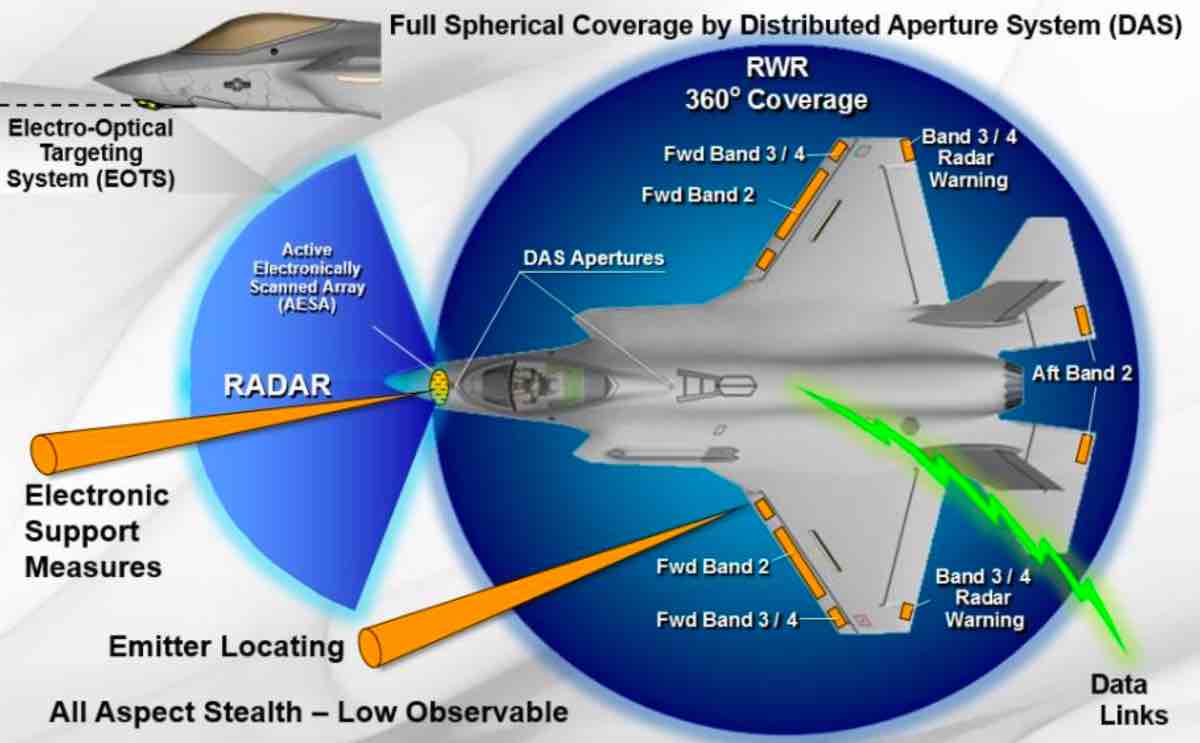
Range
Both the F-22 Raptor and the F-35 Lightning II have unlimited range with aerial refueling capabilities. But if there are no tankers available, the range of the two jet fighters is different. The F-22 carries an internal fuel load of 18,000 pounds. With two external fuel loads, ramping the total wight up to 26,000 pounds, the F-22 has a range of over 1,800 miles. The F-35 carries nearly the same amount of internal fuel as the F-22, 18,500 pounds, giving it a maximum range of just over 1,350 miles.
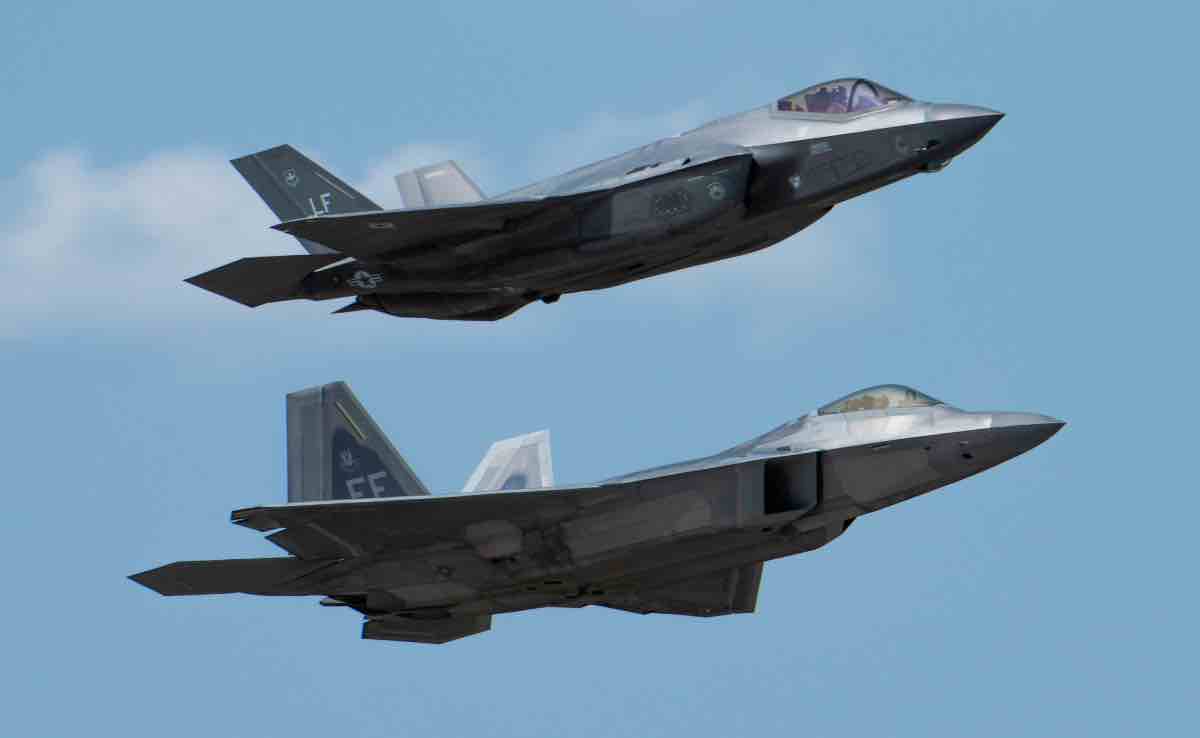
Customers
The F-22 is a premier weapon for the United States. It is the go-to air superiority aircraft for the U.S. Air Force and no one else. Lockheed Martin designed and developed the F-22 strictly for the U.S. On the other hand, the F-35 has a number of global partners. It was designed with export in mind. Countries that currently operate an F-35 Lightning II: Australia, Belgium, Canada, Denmark, Finland, Israel, Italy, Japan, Netherlands, Norway, Turkey, United Kingdom, United States, and Republic of Korea.
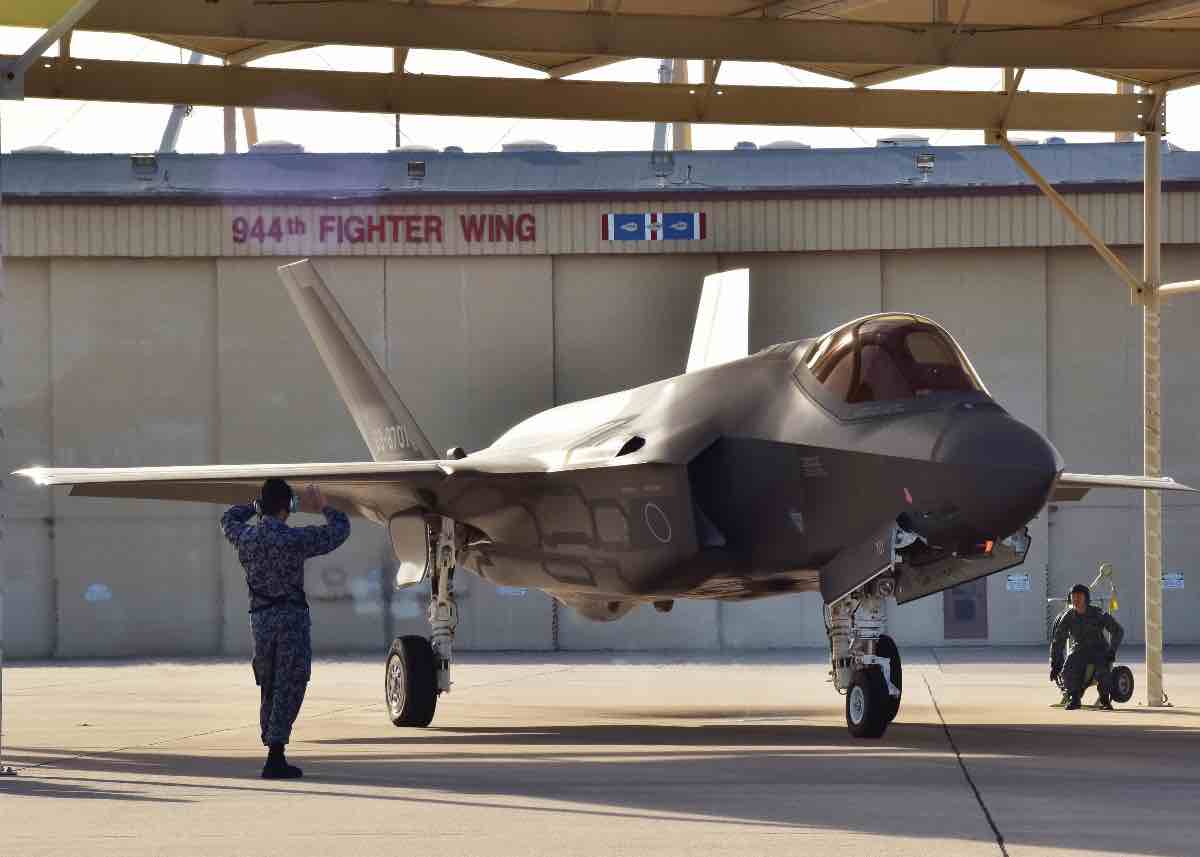
Size
When it comes to size, the F-22 is the larger plane in every facet – wingspan, takeoff weight, height, etc. But by how much? The F-22 Raptor’s wingspan is 44 feet, 6 inches wide compared to only 35 feet wide of the F-35 Lightning II. The Raptor’s maximum takeoff weight is 83,500 pounds, nearly seven tons heavier than the Lightning II;s maximum takeoff weight of 70,000 pounds. From the tire to the top, the F-22 stands at 16 feet, 4 inches. The F-35 is 14 feet tall. The F-22 is 61 feet one inch long. The F-35 is 50.5 feet long.
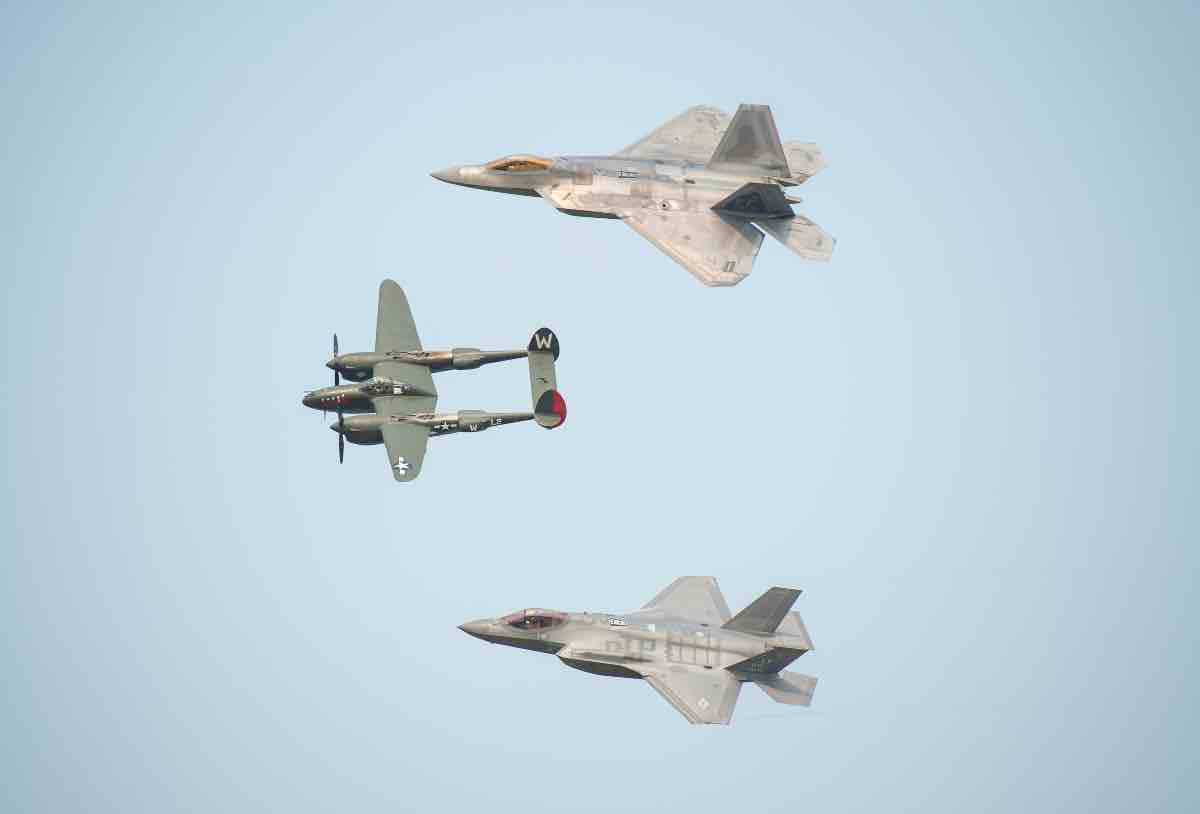
Weapons Bay
The F-35, designed for a more versatile engagement approach, has a unique weapons bay. The bay on the F-35 is deeper and narrower than the F-22, in order to carry heavier bombs mean for air-to-ground combat. The F-35 can carry any of the following air-to-ground bombs: AIM-120 AMRAAM, AIM-132 ASRAAM Brimstone anti-tank missiles, cluster munitions, Joint Direct Attack Munition and Paveway series of bombs. Some of these weigh up to 2,000 pounds. The heaviest bomb an F-22 can handle is 1,000 pounds.
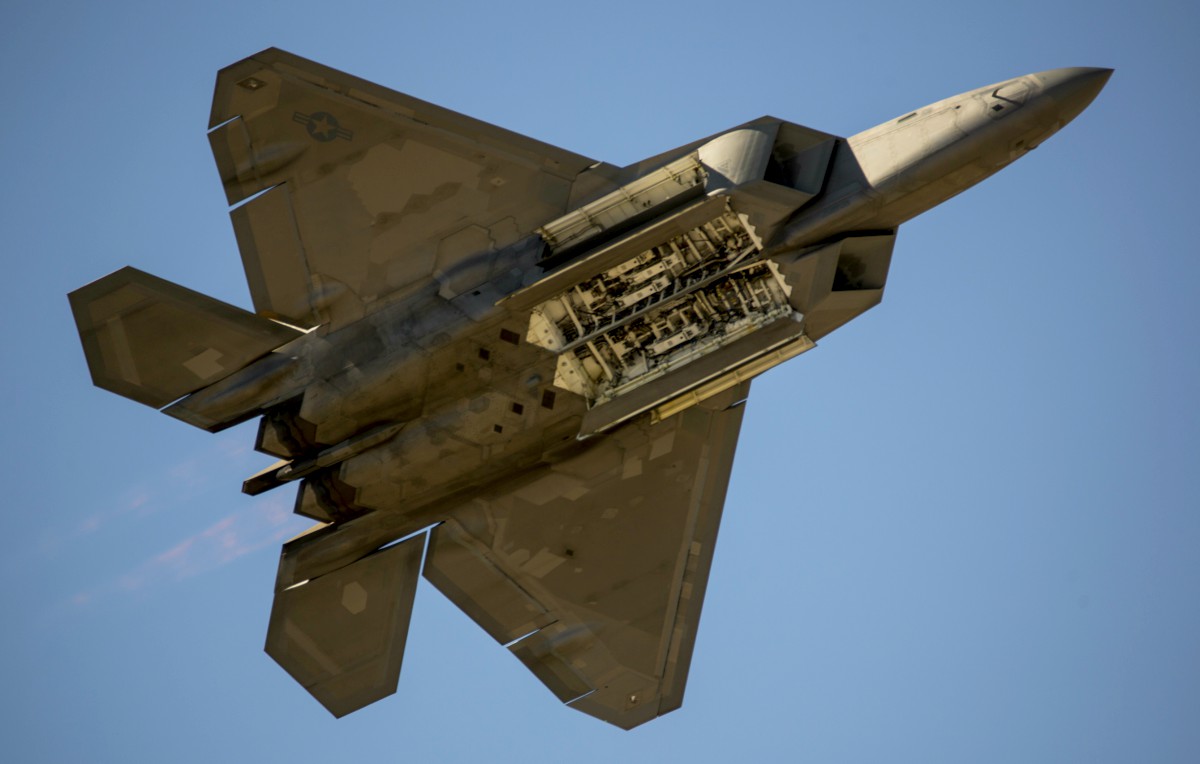
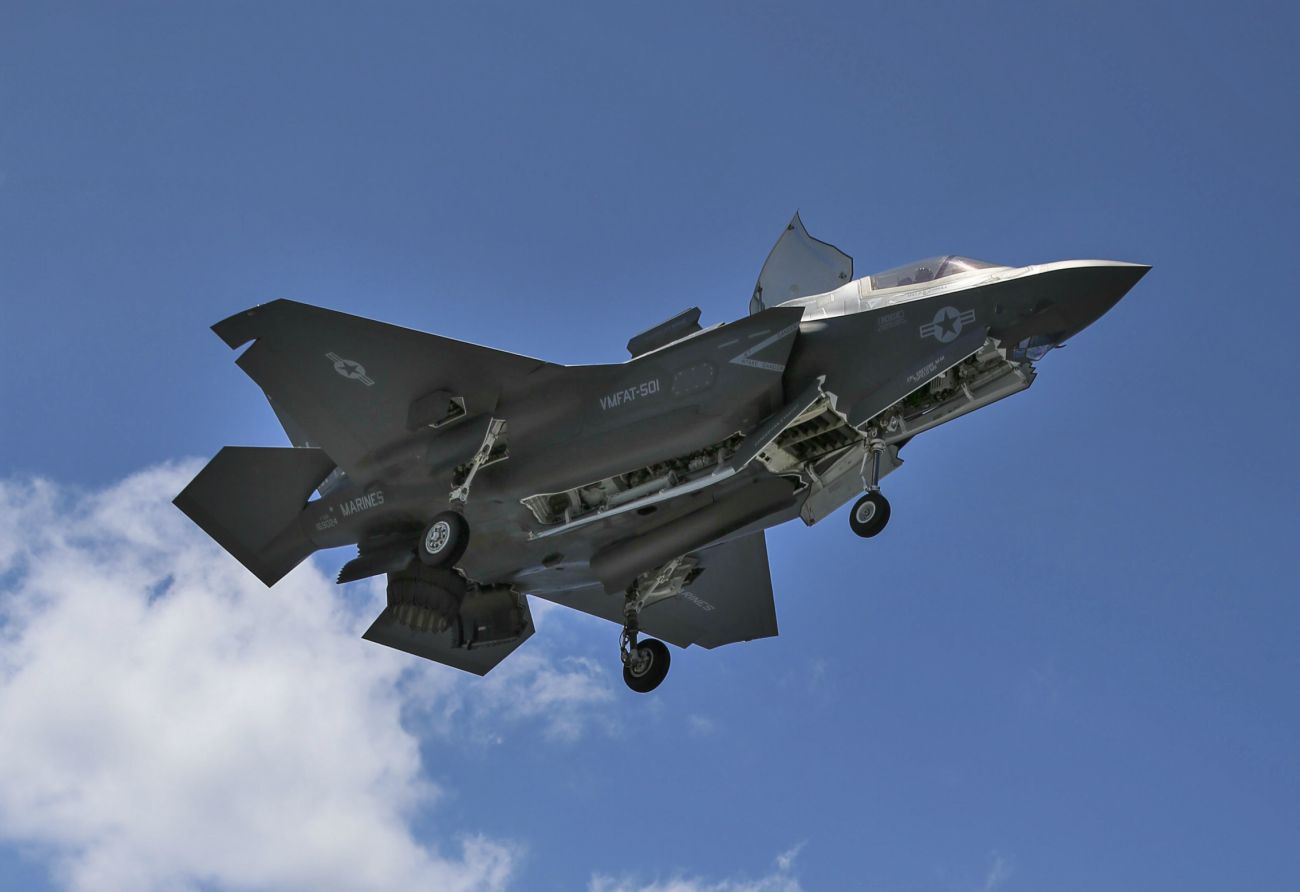
Age
The U.S. Air Force declared the necessity for a stealthy interceptor back in 1986. The missions and concepts changed several times over the years as several different contractors jockeyed for selection by the USAF. F-22’s officially entered service in 2005. But it remained on the sidelines until 2014, when four F-22’s from the 1st Fighter Wing, flying out of Joint Base Langley-Eustis, in Hampton, Virginia entered combat in Syria.
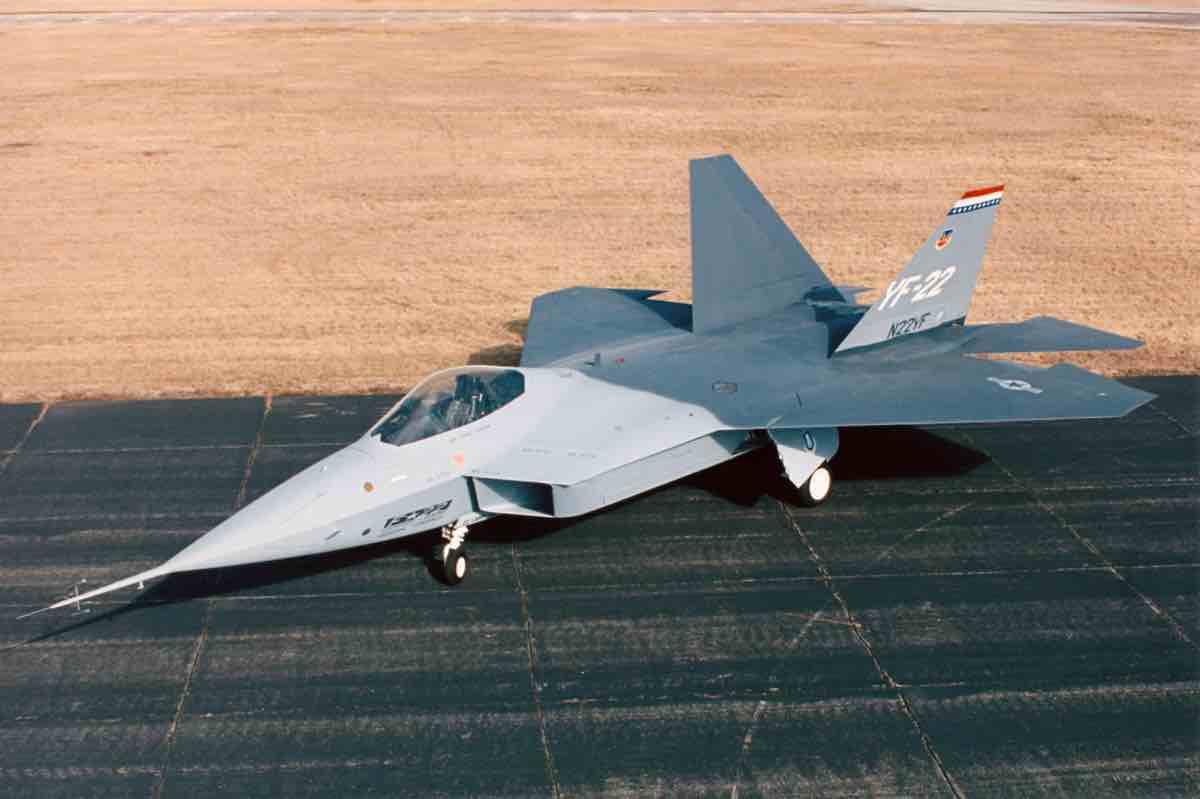
The origin of the Joint Strike Fighter dates back to 1994, when the Marine Corps scrapped any plans to revamp the AV-8B Harrier. Due to large costs of designing unique aircrafts for each branch of the military, the Department of Defense mandated that the U.S. Marine Corps, Air Force and Navy work together to create a single fighter. Thus, the Joint Strike Fighter Program. The F-35A reached Initial Operational Capability in 2014, and hasn’t seen any combat service with the U.S., yet. Israel was the first country to send an F-35 on a combat mission in 2018.
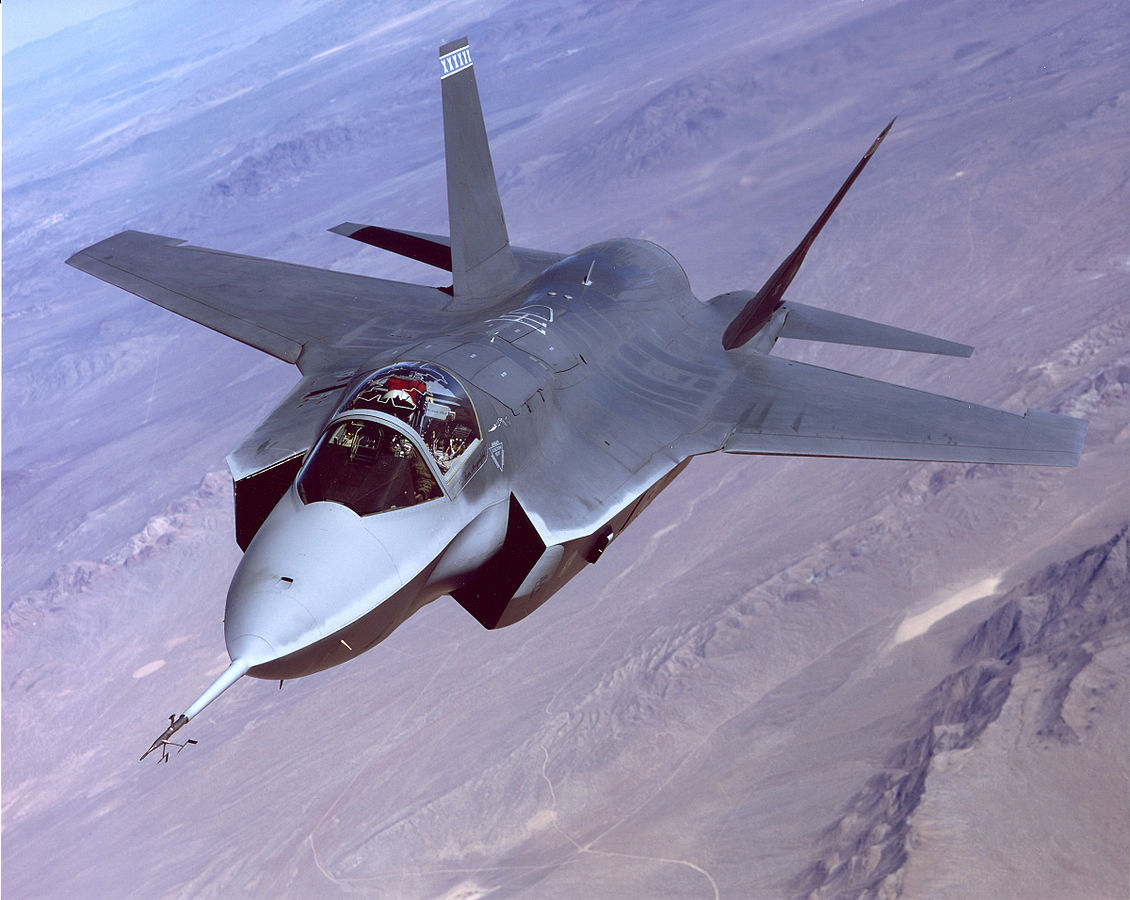
Production Site
Shrouded in secrecy, the F-22 program made it clear from the get-go that the Raptor was a U.S. machine only. The F-35 on the other hand, is much more of a global citizen. Production of the F-22 is limited strictly to the United States, specifically Lockheed Martin’s Inlet Coating Repair (ICR) Speedline facility in Marietta, Ga. The F-35 is comprised of parts from over a thousand separate subcontractors all over the world. It’s final production sites are in Fort Worth, Texas, Cameri, Italy and Nagoya, Japan.
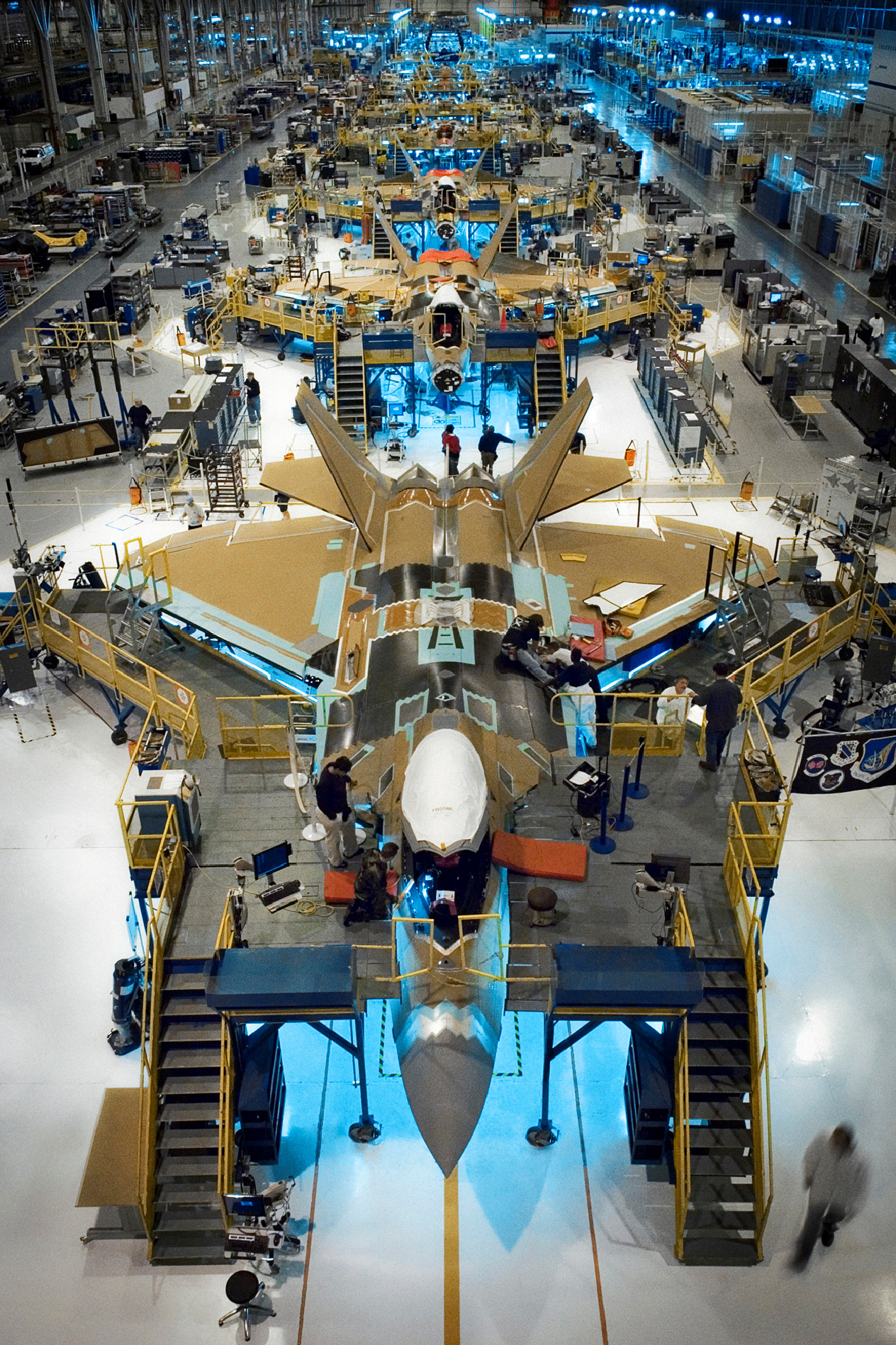
Training
Given that the F-22 is for U.S. Air Force use exclusively, it makes sense that the USAF is the only entity to train F-22 pilots. The 43rd Fighter Squadron at Tyndall Air Force Base, Florida – alongside the 325th Support Squadron – is the only squadron in the world to train and develop F-22 students.

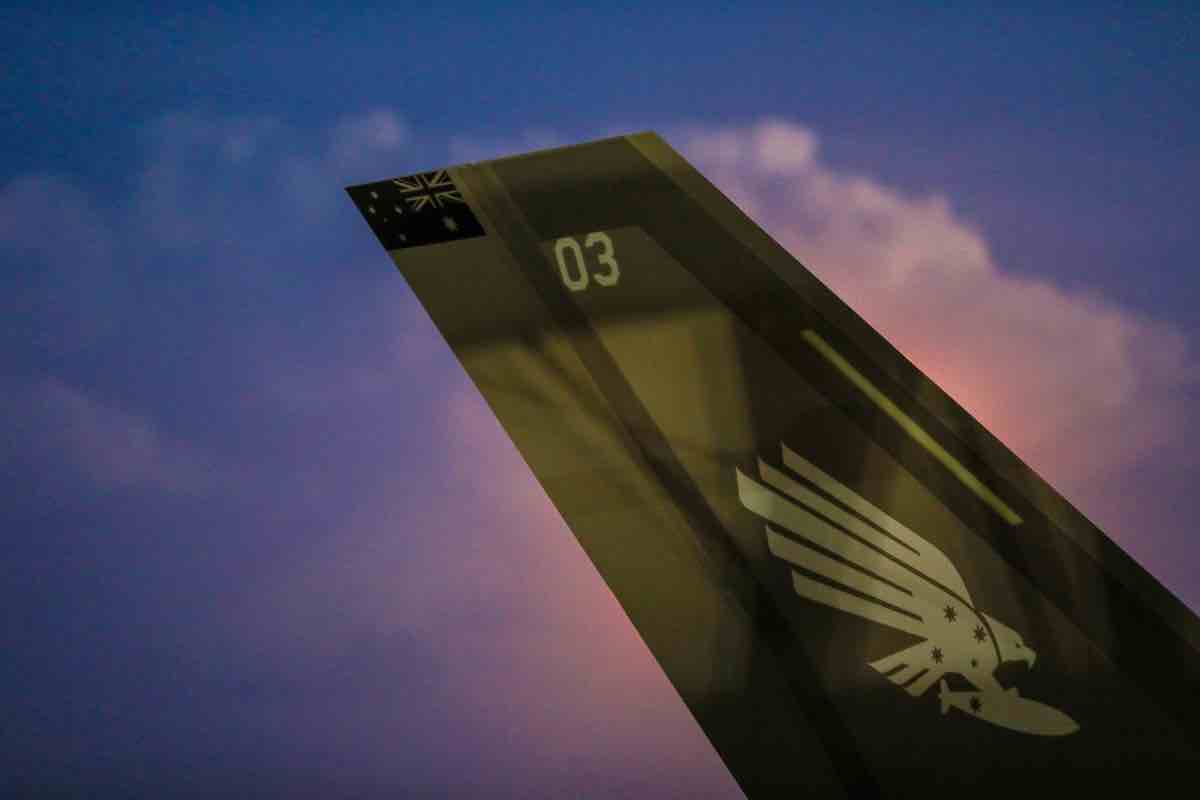
Over 500 pilots and 4,500 maintainers from eight countries have completed the F-35 Training System which takes place in multiple locations around the globe. Three main bases in the U.S. are responsible for training U.S. F-35 students, as well as some from partner nations like the U.K. and Australia. Eglin Air Force Base, Florida, takes the bulk of the workload. Marine Corps Air Station Beaufort, South Carolina, and Luke Air Force Base, Arizona are the other two locations for F-35 trainees.
Head-Up Display vs. Head Mounted Display
F-22 Raptor employs a Head-Up Display (HUD) . The HUD is the pilot’s main flight instrument in the F-22. Directly below the HUD lies the Integrated Control Panel. The Integrated Control Panel allows the pilot to enter information regarding communication, navigation and autopilot manually.
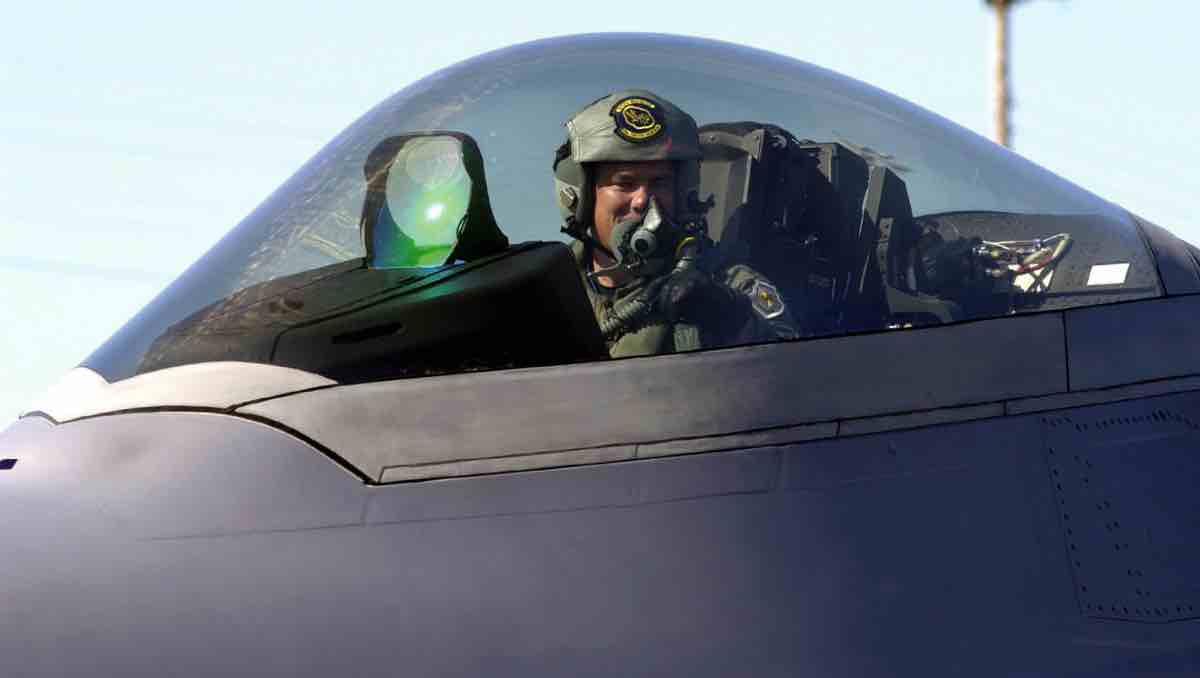
The F-35 employs a futuristic Helmet Mounted Display (HMD). The Distributed Aperture System (DAS) in the F-35 streams real-time images into the HMD from six infrared-cameras distributed around the aircraft, allowing pilots to “see through” the cockpit or airframe. Additionally, the HMD provides pilots night vision through the use of an integrated camera. In order to complete their mission, all the information the pilot needs – airspeed, heading, altitude, targeting information and warnings –projeccts onto the helmet’s visor. Read an in-depth article on the F-35 helmet here.
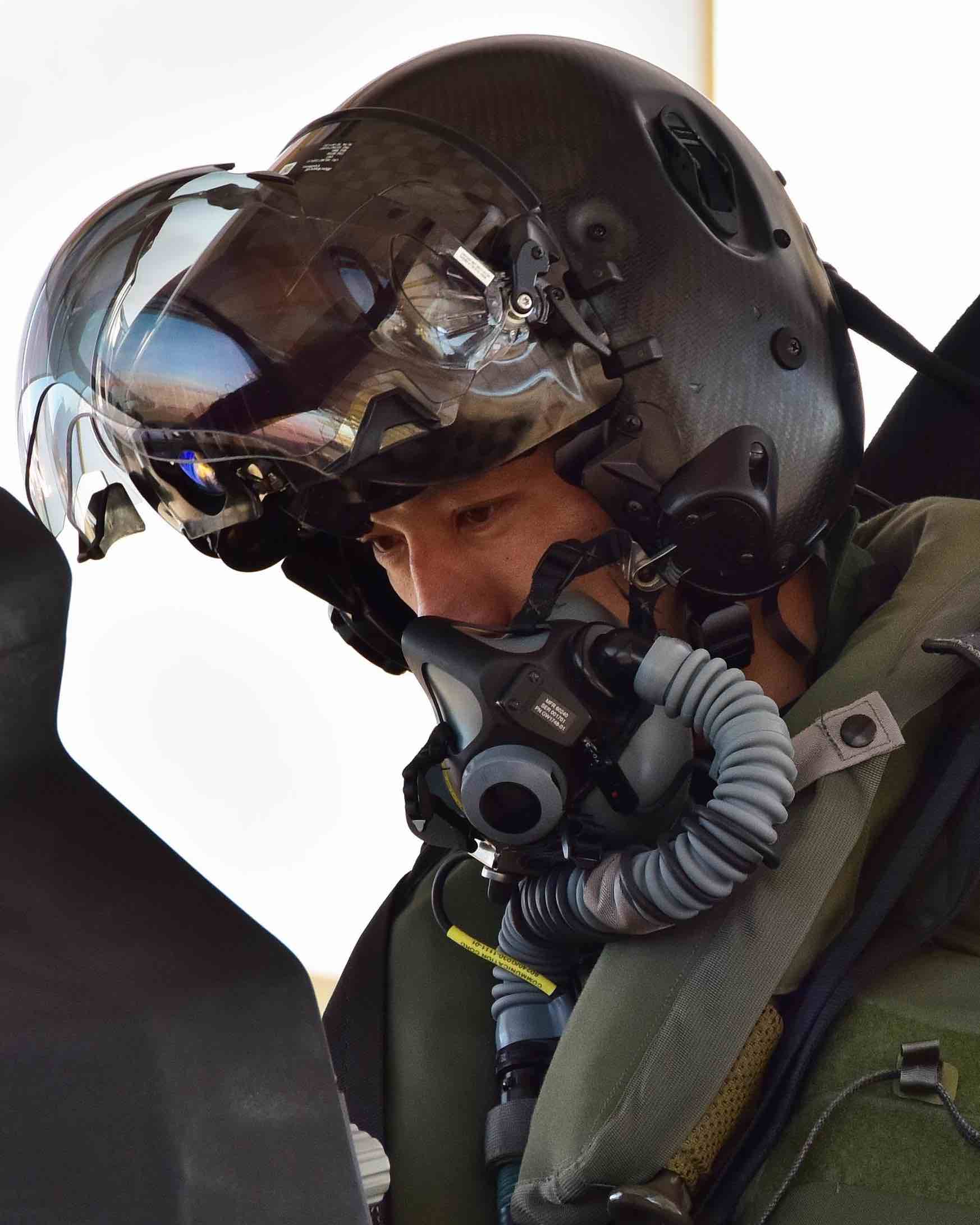
Machine Gun
Both the F-22 and F-35 are designed to locate and engage the enemy long before being sighted. But still, pilots made it clear that a machine gun needed to be on board. General Dynamics produces both machine guns for the Raptor and Lightning II, but there is some differences between the two. The F-35 is outfitted with a GAU-22/A 25mm gun. The GAU-22/A weighs 230 pounds and fires rounds at a clip of 3,300 per minute. The F-22 is outfitted with a M61A2 20mm Gatling gun. The M61A2, a little lighter at 202 pounds, is fed by a llinear linkless ammunition feed system and fires a 6,000 rounds per minute. General Dynamics produces the machine guns for both fifth-generation fighters as well as the A-10 Warthog, F-15 Eagle, F-16 Falcon, FA-18 Hornet, and Bell AH-1 helicopter.
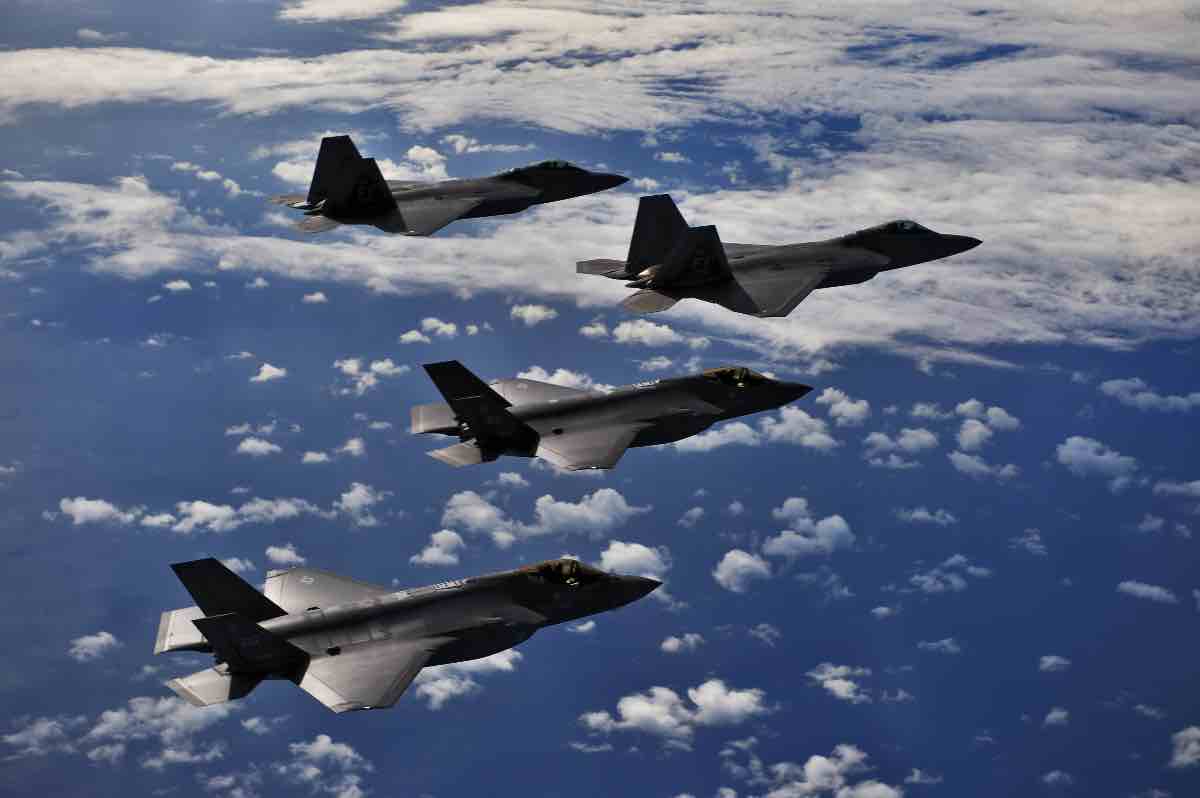
Read our in-depth analysis of the F-16 vs the F-35.

